Fly into the captivating world of creativity and nature with our insect coloring pages. These fun illustrations offer more than just a chance to fill in spaces with color; they provide an educational opportunity to explore the diverse and fascinating universe of insects. These coloring pages not only unleash your artistic flair but also serve as windows into the remarkable world of these tiny creatures. Join us on a colorful journey as we bring to life the details of insects through the strokes of your imagination on our insect coloring sheets.

Feel free to select the design that resonates with you the most, then proceed by saving the readily available PDF template that comes at no cost.
Once saved, you can effortlessly print it and indulge in the joy of coloring to your heart’s desire.
Alternatively, these designs can serve as an excellent foundation for embroidery projects or as a wellspring of inspiration for crafting intricate fine-line tattoos.
Insect facts
For those who are new to my coloring pages, it’s important to note that I always strive to provide you with the opportunity to delve into the subject matter, allowing you to seamlessly transform your coloring experience into an educational journey.
Now, let’s embark on just that!
Here are lots of fun and interesting, simplified, facts about insects:
- Diverse Species: Insects make up the largest and most diverse group of animals on Earth, with over a million known species and an estimated 10 million more yet to be discovered.
- Tiny Marvels: Some of the smallest insects, like the fairy wasp, are only about 0.008 inches (0.2 mm) in length, while the largest insects, such as the Atlas moth, can have wingspans of up to 12 inches (30 cm).
- Ancient Explorers: Insects are ancient creatures, with fossil evidence suggesting that they were among the first animals to fly over 350 million years ago.
- Incredible Adaptations: Insects have evolved a wide range of adaptations, from the camouflaging stick insects to the mimicry of leaf-tailed geckos.
- Superb Pollinators: Many insects, such as bees, butterflies, and beetles, play a crucial role in pollinating flowers, aiding in the reproduction of plants and the production of fruits and seeds.
- Silk Producers: Certain insects, like silkworms, produce silk that humans have used for centuries to create fabrics, threads, and even medical sutures due to its strength and versatility.
- Social Insects: Insects like ants, bees, and termites exhibit complex social structures, with distinct roles for workers, soldiers, and reproductive individuals within their colonies.
- Metamorphosis Marvels: Insects undergo various forms of metamorphosis. Butterflies and moths, for example, experience complete metamorphosis, transitioning from egg to larva (caterpillar), pupa (chrysalis), and adult.
- Echolocation Experts: Some insects, like certain species of moths and beetles, have developed their own form of echolocation to navigate and communicate in the dark.
- Defensive Strategies: Insects have evolved remarkable defense mechanisms. Ladybugs exude toxic chemicals to deter predators, while bombardier beetles release a hot chemical spray when threatened.
- Aquatic Wonders: Water striders use the surface tension of water to “walk” on water, thanks to their hydrophobic legs.
- Entomophagy: Insects are consumed as a food source by various cultures around the world, providing a sustainable and protein-rich alternative to traditional livestock.
- Insect Communication: Insects communicate using a variety of methods, including pheromones, vibrations, and sounds, to convey information about mating, territory, and danger.
- Insect Architects: Termites build towering mounds, bees create intricate honeycombs, and leafcutter ants cultivate gardens of fungi, showcasing their remarkable abilities as builders.
- Camouflage Masters: Insects like walking sticks, leaf insects, and katydids are masters of camouflage, blending seamlessly into their surroundings to avoid detection.
- Ecosystem Engineers: Insects play crucial roles in ecosystems as decomposers, breaking down organic matter and recycling nutrients back into the environment.
- Flight Pioneers: Insects were the first creatures on Earth to develop powered flight, paving the way for the evolution of birds and bats.
- Colorful Displays: Insects display a dazzling array of colors and patterns, often serving as a warning to predators or as a means of attracting mates.
- Medical Insights: Insects have provided insights into medical advancements, including research on wound healing, antibiotics, and the development of insect-based therapies.
The world of insects is a treasure trove of captivating features and behaviors that continue to intrigue scientists, artists, and nature enthusiasts alike.
We learned a lot, but there is so much more to learn about insects.
If you would like to continue learning, here are some other reputable resources to help you in your quest for bug-knowledge:
- https://en.wikipedia.org/wiki/Insect
- http://naturalhistory.si.edu/education/teaching-resources/life-science/what-insect
- https://australian.museum/learn/animals/insects/what-are-insects/
- https://www.pbslearningmedia.org/resource/ket-earlychild-sci8/whats-an-insect/
- https://www.natgeokids.com/uk/discover/animals/insects/15-facts-about-bugs/
- To see all of my free printables, go here.
- If you would like to see my index of free printable coloring pages, go here!
- To see all of my animal coloring pages, go here.
- To see all of my insect-related coloring pages, go here.
Printing instructions
*Keep in mind that while these coloring sheets are free, they are for personal use only. Any additional use will need written permission, from me, obtained via email. Thanks.*

How to get best results with your insect printable
Learn all about insects as you color. From writing practice worksheets to various fun designs, there are coloring options for everyone.
Materials
- Black Ink/Toner
- Standard 8.5"x11" Printing Paper (or quality cardstock)
Tools
- Printer
- Computer/ Phone/ Or Tablet To Download To
- Colored Pencils
- Pencil Sharpener
- Eraser (optional)
Instructions
-
 Browse through the options of coloring sheets available and select the image or images you would like to color. The provided sample image, featuring the website's watermark, offers an idea of what the full PDF looks like.
Browse through the options of coloring sheets available and select the image or images you would like to color. The provided sample image, featuring the website's watermark, offers an idea of what the full PDF looks like. -
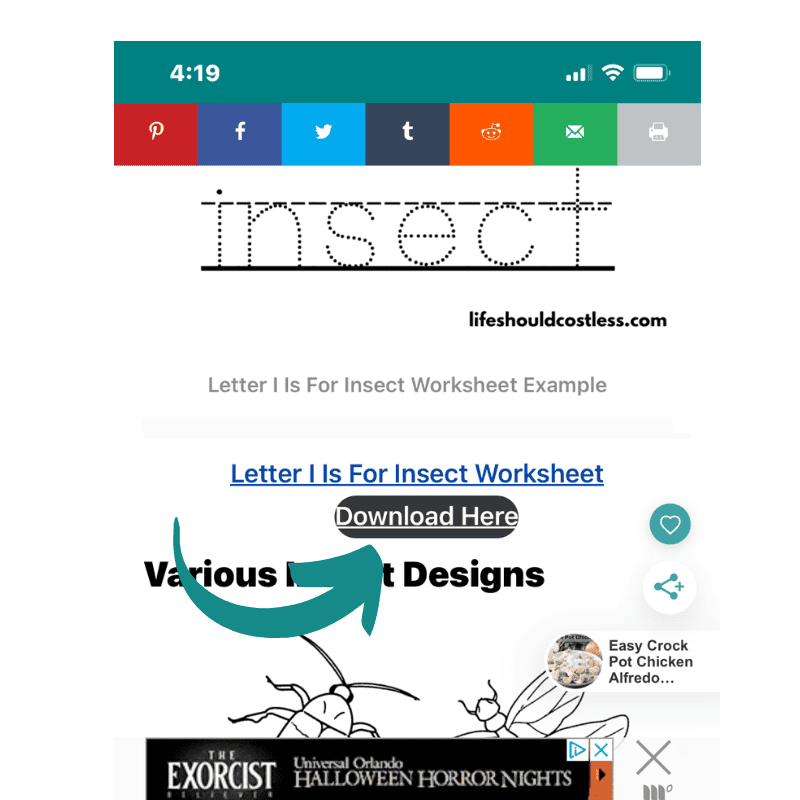 Direct your gaze just below the preferred sample image to locate the "download here" button for the attached PDF.
Direct your gaze just below the preferred sample image to locate the "download here" button for the attached PDF. -
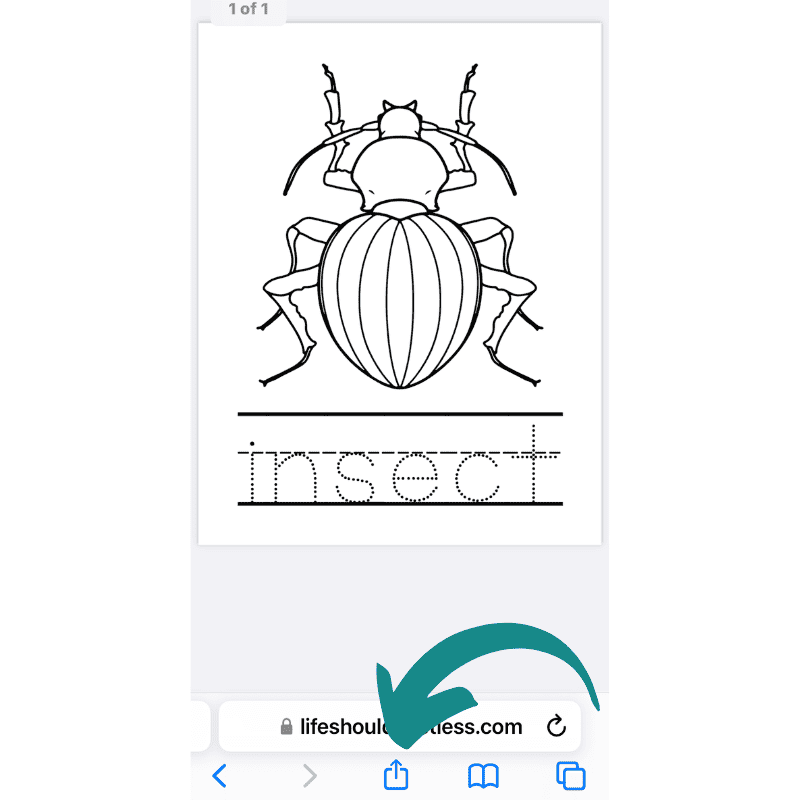
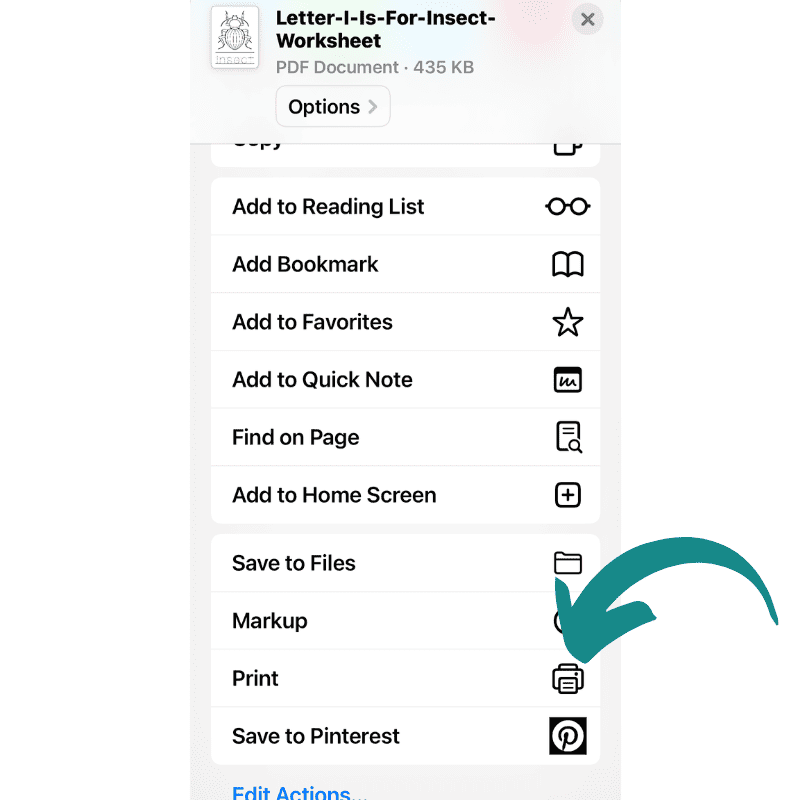 Select download, and then go to the print option.
Select download, and then go to the print option. -
 When you're ready to print it out, make sure to choose the highest-quality setting available. Or the maximum DPI (dots per inch) setting accessible. DPI refers to the amount of printed dots within an inch, and a greater the number indicates better print quality.
When you're ready to print it out, make sure to choose the highest-quality setting available. Or the maximum DPI (dots per inch) setting accessible. DPI refers to the amount of printed dots within an inch, and a greater the number indicates better print quality. -
 Now go ahead and select "print". Send it to your printer of choice.
Now go ahead and select "print". Send it to your printer of choice. -
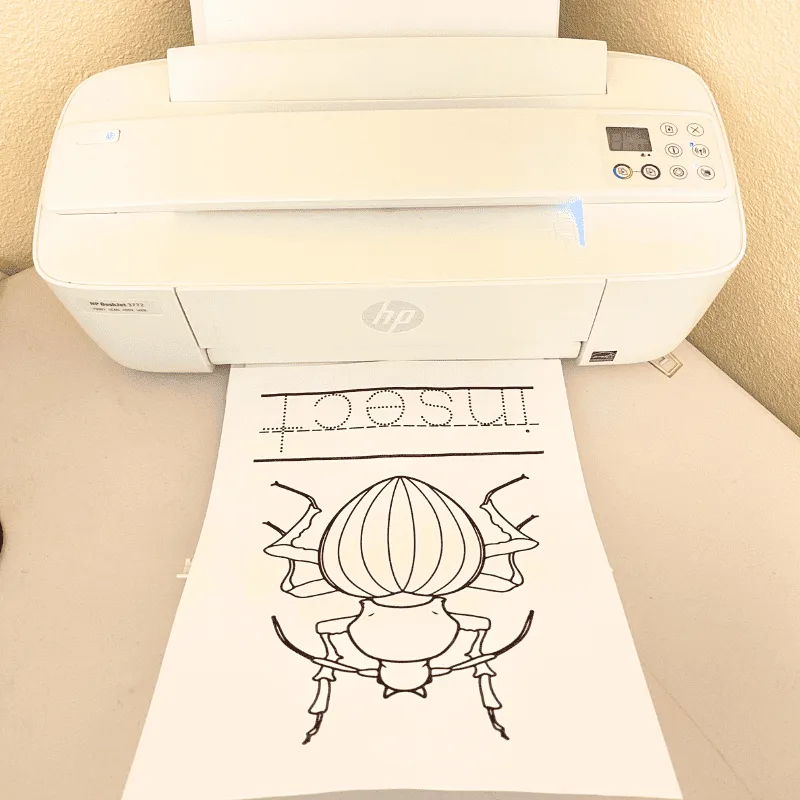 After you have completed printing out your coloring page, give the ink a few minutes to completely dry and set. This extra precautionary step will help to avoid any smudging, which is particularly helpful if you would like to give your artwork to someone.
After you have completed printing out your coloring page, give the ink a few minutes to completely dry and set. This extra precautionary step will help to avoid any smudging, which is particularly helpful if you would like to give your artwork to someone. -
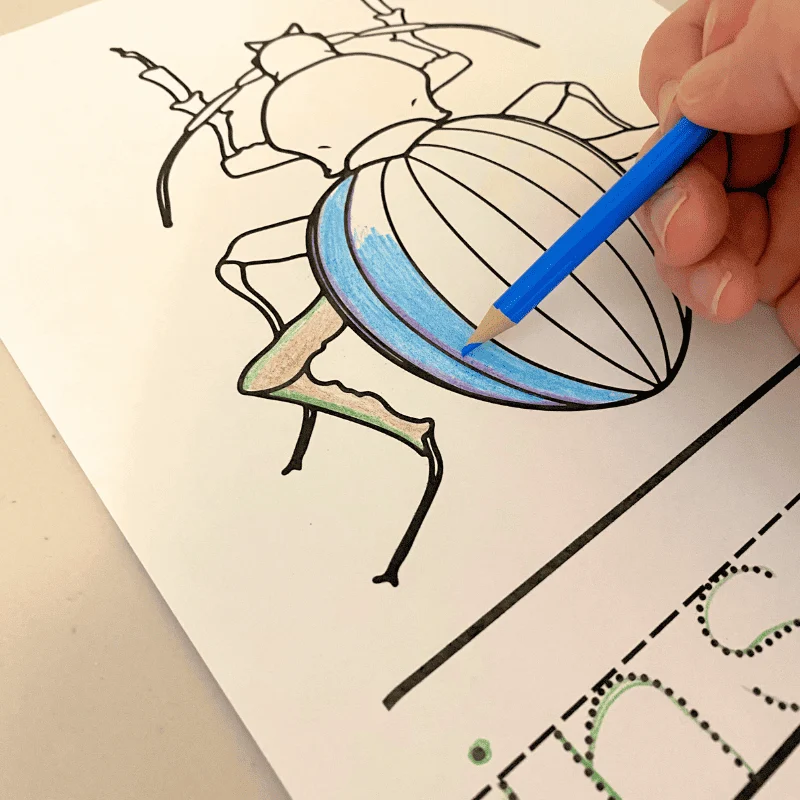 Before you begin coloring your insect masterpiece, make sure your hands have been washed and are completely dry. Locate a clean and flat surface to place your paper on, athen let your creativity flow as you color the prints however you desire. Once you're done, enjoy the new-found sense of accomplishment, knowing that these artwork creations can possibly bring joy to you and others for many years to come.
Before you begin coloring your insect masterpiece, make sure your hands have been washed and are completely dry. Locate a clean and flat surface to place your paper on, athen let your creativity flow as you color the prints however you desire. Once you're done, enjoy the new-found sense of accomplishment, knowing that these artwork creations can possibly bring joy to you and others for many years to come.
Notes
Ideas on what to do with these insect pictures:
You could buy some simple frames, have them printed onto quality card stock at a local printing company, color them as well as you are able to, and they could be added to your home decor.
You could print the pages out & bind them, pair them with some nice colored pencils or an art set. Which could be a fun, but unique gift for any coloring enthusiast's special day...or any time you wish to cheer someone up.
Alternatively, they can serve as inspiration or templates for those delicate fine-line tattoos.
These free insect coloring pictures can also be used as embroidery patterns by simply using transfer sheets.
Naturally, you also have the choice to print them & enjoy boundless amusement by coloring them repeatedly.
*Instructions for attaining the best print quality have been primarily designed to cater to iPhone users utilizing an HP printer; nevertheless, these guidelines should hold similar relevance for various other devices.
**Whenever it is an option, selecting the "fit to page" option before printing is a good idead to ensure the whole image makes it onto your printed coloring page.
***This website employs an image optimization technique for the provided sample illustrations. While this optimization enhances loading speed, there is a minor compromise on quality. For optimal outcomes, we suggest downloading and directly utilizing the PDF file. The sample image is intended to offer a general visual preview since navigating through an entire PDF might present challenges on certain devices, potentially impeding the ability to view the complete image in a singular screenshot.
Recommended Products
Please note that I am an affiliate with Amazon.com. When you purchase through my suggested product links, the cost for you is the same but I do receive a small commission for everything in your shopping cart. Thanks so much for the support!
-
 Printworks Vanishing Embroidery Transfers, for White/Light-Colored Fabrics, 12 Sheets, Inkjet, 8.5 x 11 (00524)
Printworks Vanishing Embroidery Transfers, for White/Light-Colored Fabrics, 12 Sheets, Inkjet, 8.5 x 11 (00524) -
 eletecpro 12x16 Picture Frames Set of 5, Display 8x10 or 8.5x11 Photo Frame with Mat or 12x16 without Mat, Wall Gallery Poster Frames, Photo Frames Collage for Wall Display
eletecpro 12x16 Picture Frames Set of 5, Display 8x10 or 8.5x11 Photo Frame with Mat or 12x16 without Mat, Wall Gallery Poster Frames, Photo Frames Collage for Wall Display -
 PRINA Art Supplies 120-Color Colored Pencils Set for Adults Coloring Books with Sketchbook, Professional Vibrant Artists Pencil for Drawing Sketching Blending Shading, Quality Soft Core Oil Based
PRINA Art Supplies 120-Color Colored Pencils Set for Adults Coloring Books with Sketchbook, Professional Vibrant Artists Pencil for Drawing Sketching Blending Shading, Quality Soft Core Oil Based -
 U.S. Art Supply 163-Piece Mega Deluxe Art Painting, Drawing Set in Wood Box, Desk Easel - Artist Painting Pad, 2 Sketch Pads, 24 Watercolor Paint Colors, 24 Oil Pastels, 24 Colored Pencils, 60 Crayons
U.S. Art Supply 163-Piece Mega Deluxe Art Painting, Drawing Set in Wood Box, Desk Easel - Artist Painting Pad, 2 Sketch Pads, 24 Watercolor Paint Colors, 24 Oil Pastels, 24 Colored Pencils, 60 Crayons -
 Looney Zoo Temporary Tattoo Markers for Skin, 10 Body Markers + 20 Large Tattoo Stencils for Kids and Adults, Dual-End Tattoo Pens Make Bold and Fine Lines with Cosmetic-Grade Temporary Tattoo Ink
Looney Zoo Temporary Tattoo Markers for Skin, 10 Body Markers + 20 Large Tattoo Stencils for Kids and Adults, Dual-End Tattoo Pens Make Bold and Fine Lines with Cosmetic-Grade Temporary Tattoo Ink -
 Sacnahe Tattoo Transfer Stencil Machine Copier Printer Thermal Tattoo Kit Copier Printer With 20pcs Free Tattoo Stencil Transfer Paper Black (2023 Update Version)
Sacnahe Tattoo Transfer Stencil Machine Copier Printer Thermal Tattoo Kit Copier Printer With 20pcs Free Tattoo Stencil Transfer Paper Black (2023 Update Version)
Coloring tips
Here are my best tips and tricks to get the best results when creating your insect artwork:
- Research and Reference: Before you start coloring, take a moment to research the specific insect you’re coloring. Look up images of the insect in its natural habitat to understand its colors, patterns, and textures. This will help you create a more accurate and visually appealing coloring page.
- Color Palette Selection: Choose a color palette that complements the insect’s natural colors. Consider the shades of its body, wings, and any distinct markings. If you’re feeling creative, you can experiment with slightly different shades to add depth and dimension.
- Layering Technique: Start with light colors and gradually build up layers of color for shading and depth. Layering can create a more realistic and vibrant look. Use a light touch when applying color, as it’s easier to add more color later than to remove excess pigment.
- Blending and Gradient: Use the blending technique to smoothly transition between colors. Start with the lightest color, then gradually add darker shades. You can use colored pencils, markers, or even watercolors for this effect.
- Texture and Detail: Insects often have intricate textures and details on their bodies and wings. Use fine-tipped pens or pencils to add these fine details, such as lines, dots, and scales. This attention to detail will make your coloring page more realistic.
- Highlighting and Shadows: Create depth by adding highlights and shadows. Consider the light source and imagine where the light would hit and where shadows would be cast. Adding highlights with a white gel pen can make certain areas pop.
- Experiment with Techniques: Don’t be afraid to experiment with different coloring techniques. Try cross-hatching, stippling, or even using a blending solution with colored pencils. Different techniques can create unique textures and effects.
- Background Choices: Think about the insect’s environment when choosing a background color or pattern. A natural background can enhance the overall look and story of the coloring page. If you’re feeling adventurous, you could even create a habitat for the insect.
- Reference Real-Life Photos: If you have access to photographs of insects, use them as references. This can help you capture the intricate details, colors, and proportions accurately.
- Practice and Patience: Coloring insects, especially with intricate details, can take time and practice. Don’t rush the process. Take your time to enjoy each step and refine your skills along the way.
- Color Harmony: Consider the overall color harmony of your coloring page. Choose colors that work well together and create a visually pleasing composition.
- Protect Your Work: After you’ve completed your coloring, consider using fixatives or sealants to protect your artwork from smudging or fading over time.
- Inspiration from Nature: Spend time observing insects in nature if possible. Observing their colors, movements, and behavior can provide inspiration for your coloring.
Remember, the key is to enjoy the process and have fun while coloring.
Let your creativity flow and don’t be afraid to add your personal touch to your insect masterpieces.
Insect Color Sheet Options For Printing:
Letter I is for insect writing practice worksheets
*My letter I is for insect printable coloring sheets are tailor-made for classroom use and are the sole printables on this page that can be employed in public settings without requiring written authorization.
If anyone inquires about their source, kindly share the link to this post. We appreciate your cooperation!
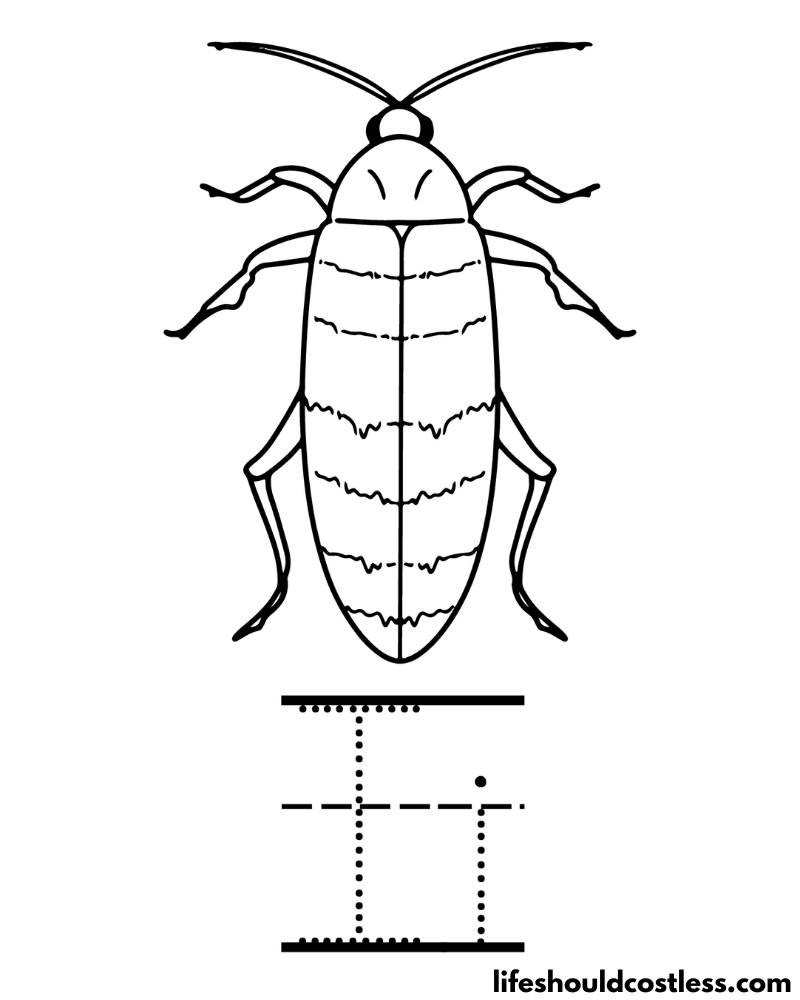
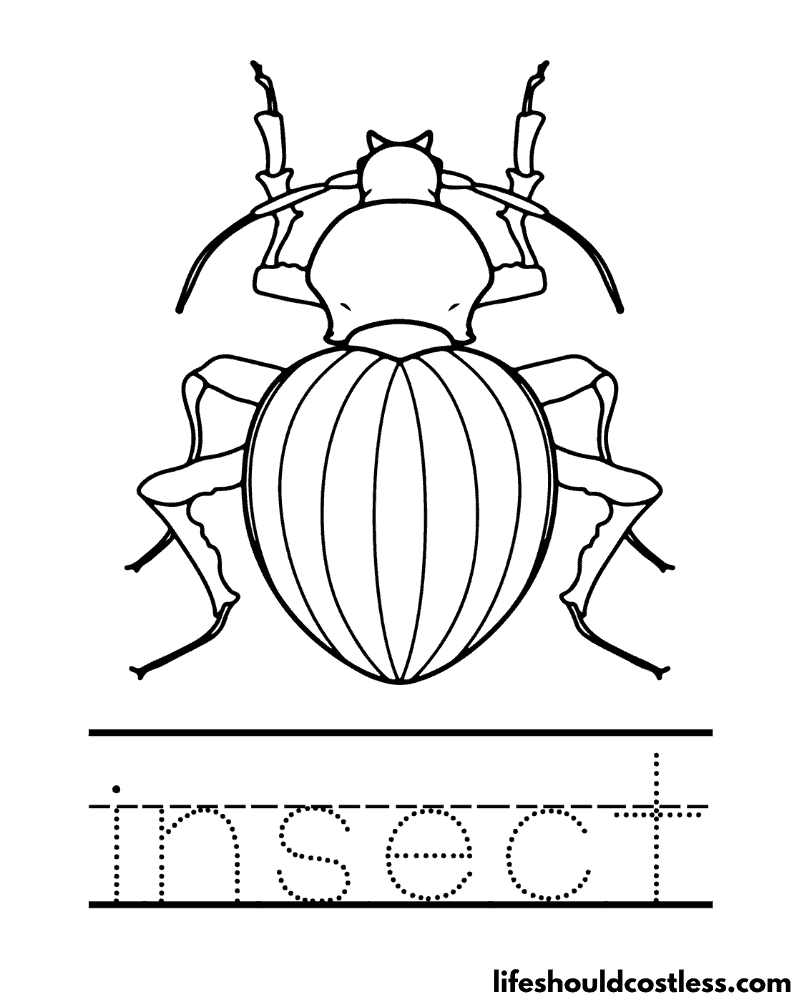
Various Insect Designs
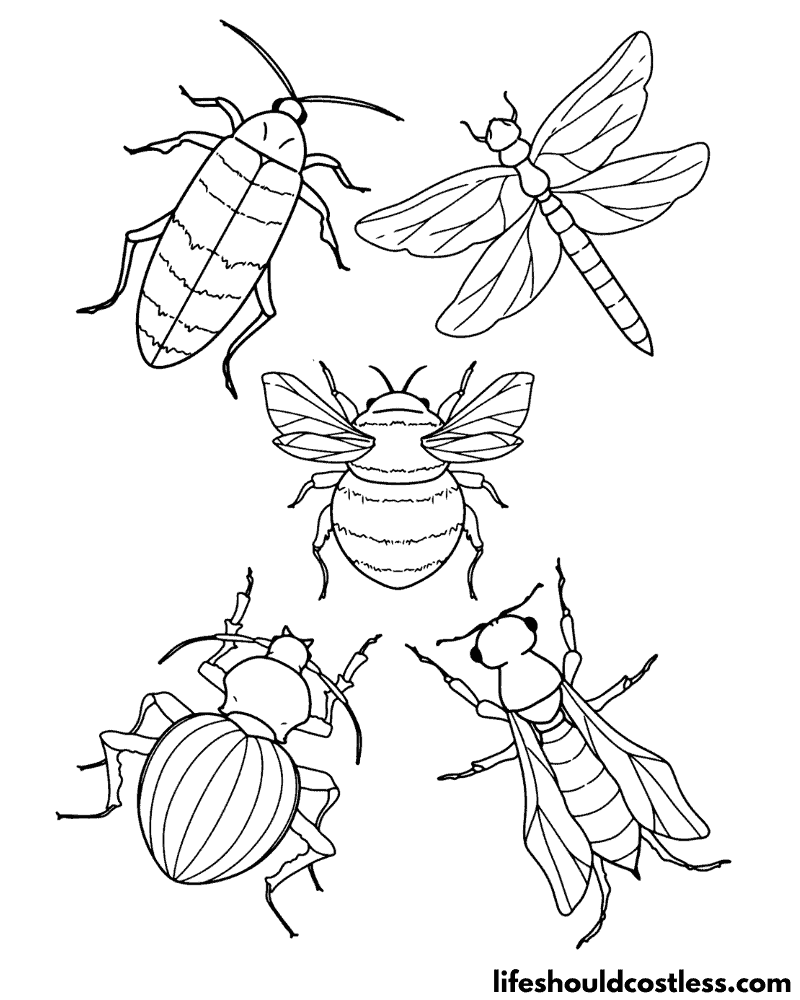
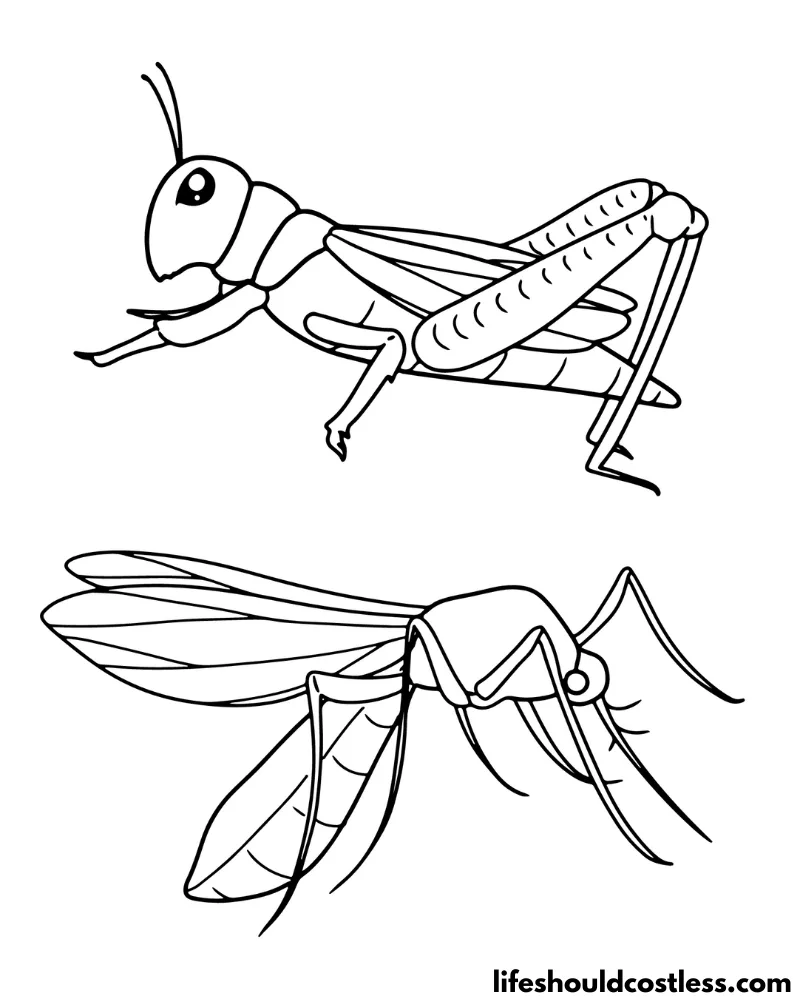
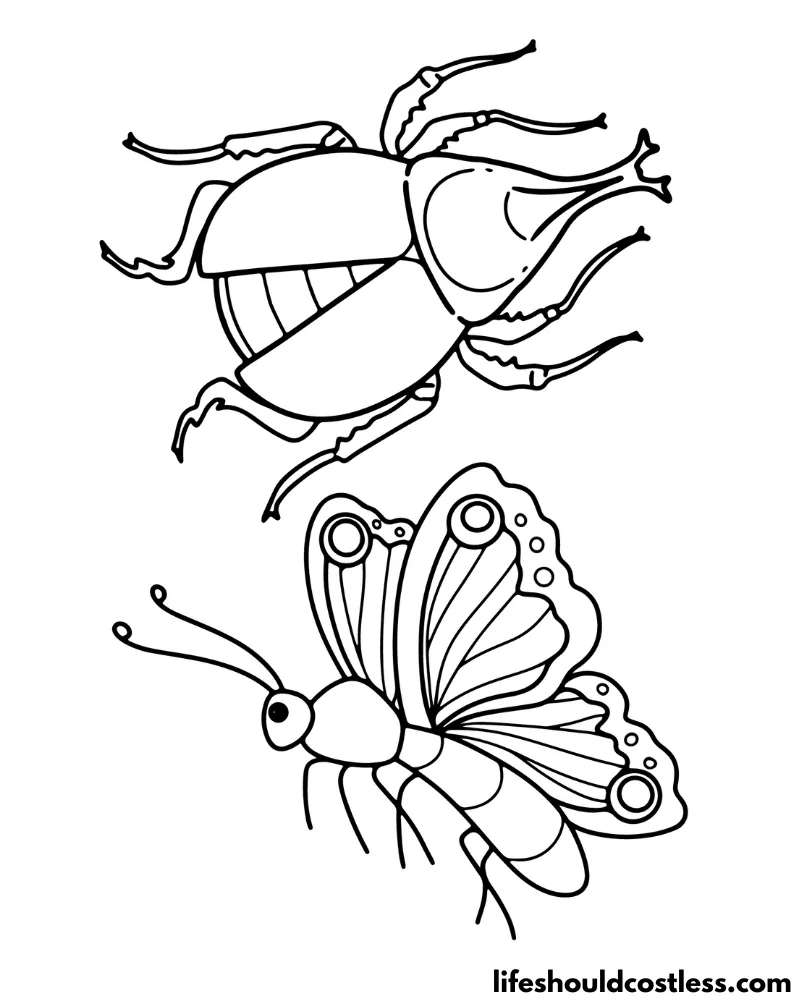


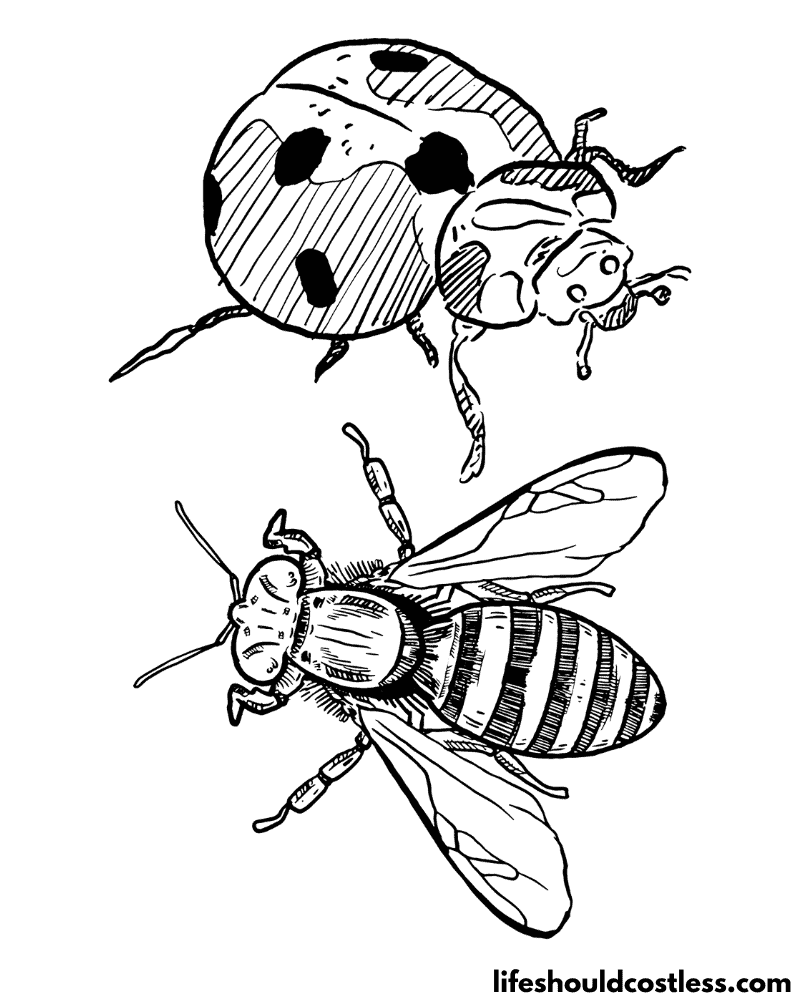
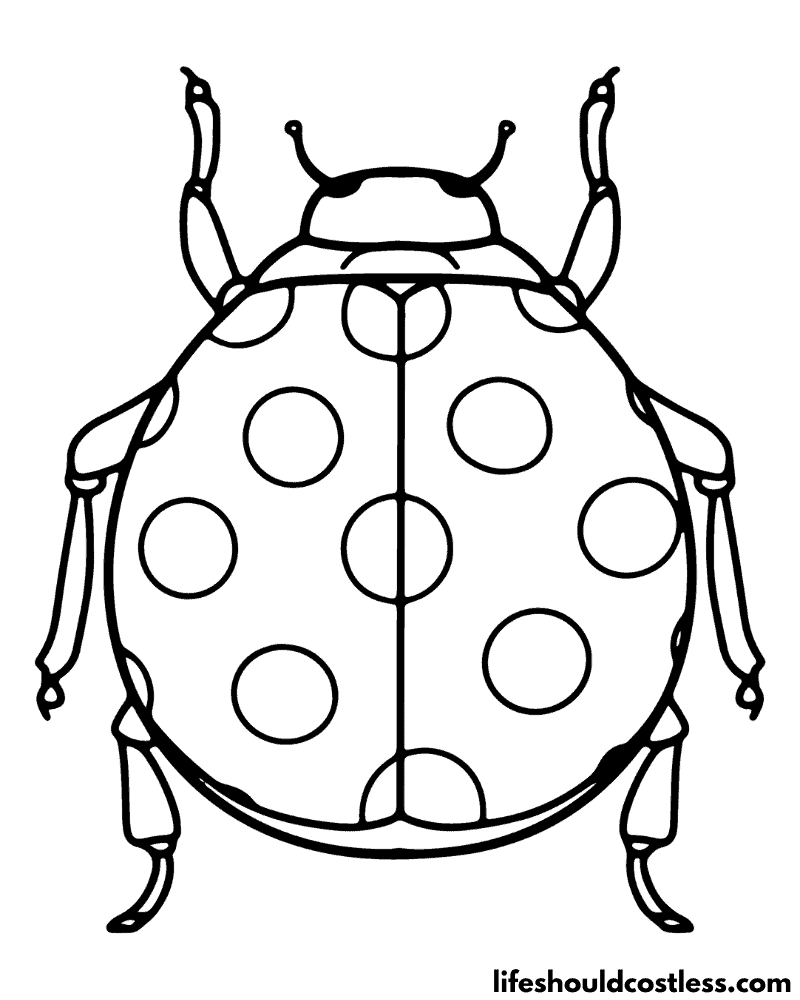
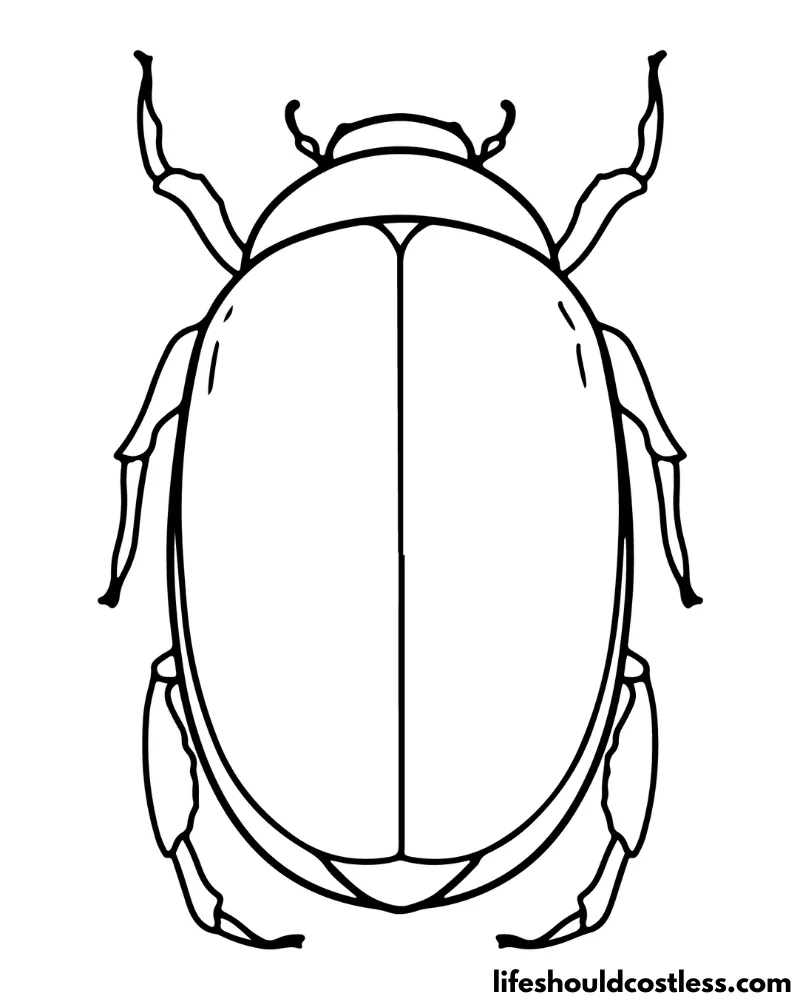

FAQ’s
The most colorful insect is a matter of debate and can vary based on different criteria, such as the diversity and intensity of colors, the specific range of hues, and the context in which color is perceived.
However, some of the most colorful insects include:
Orchid Mantis (Hymenopus coronatus): This mantis species displays shades of pink, white, and purple that resemble the colors of orchid flowers. Its coloration helps it blend into its floral surroundings as it waits to ambush prey.
Morpho Butterfly (Morpho spp.): The iridescent blue wings of the Morpho butterfly are iconic. The color isn’t due to pigments but to microscopic structures on the wing scales that reflect light.
Rainbow Leaf Beetle (Chrysolina cerealis): As its name suggests, this beetle species displays a rainbow-like array of colors, including green, red, blue, and purple.
Goliath Beetle (Goliathus spp.): These large beetles have impressive coloration, often featuring metallic hues such as gold, green, and blue. They’re known for their elaborate patterns and robust size.
Blue Carpenter Bee (Xylocopa caerulea): This bee species is often referred to as the “blue banded bee” due to its striking iridescent blue coloration.
Golden Tortoise Beetle (Charidotella sexpunctata): The golden tortoise beetle displays a shiny gold or metallic appearance. It’s capable of changing color slightly due to the arrangement of its microscopic scales.
Panamanian Long-Winged Beetle (Acrocinus longimanus): This long-horned beetle species showcases striking blue and black colors on its body and wings.
Remember that color perception can vary depending on lighting conditions, the observer’s visual capabilities, and the specific species being considered.
These examples highlight the remarkable diversity and beauty of insects’ coloration, which plays a significant role in their survival, communication, and interactions with the environment.
Insects come in a wide range of colors, and the most common colors they exhibit can vary based on factors such as species, habitat, and evolutionary adaptations. However, some of the most common insect colors include:
Green: Many insects are green, which helps them blend into foliage and vegetation. This coloration provides camouflage and protection from predators.
Brown: Brown is another common color in insects, especially those that live in or on the ground. Brown coloration helps insects blend into soil, bark, or other natural surfaces.
Black: Black is a widespread color among insects. It can provide a neutral or cryptic appearance, helping insects avoid detection or heat absorption.
Yellow and Orange: Insects often use bright yellow and orange colors to signal danger. These warning colors can indicate that the insect is toxic, unpalatable, or otherwise harmful.
Red: Red coloration can serve as a warning signal, similar to yellow and orange. Red can also attract mates in certain species, especially in insects that are active during the day.
Blue: While less common than other colors, blue is often seen in the wings or bodies of certain butterfly species, as well as in bees and beetles.
Metallic Hues: Many insects exhibit iridescent or metallic colors, such as blue, green, or copper. These colors are often the result of structural coloration rather than pigments.
White: White coloration can help insects blend into light-colored surfaces, such as flowers or snowy environments. It can also serve as a base color for patterns and markings.
Gray: Gray coloration is often seen in insects that inhabit urban environments or those that use cryptic coloration to hide on rocks or other surfaces.
Stripes and Patterns: Insects frequently have contrasting stripes, spots, or patterns on their bodies. These patterns can serve various purposes, including mimicry, warning signals, and attracting mates.
It’s important to note that insect coloration is incredibly diverse, and many insects exhibit combinations of these colors or variations in different life stages.
The coloration of an insect is often closely tied to its survival strategies, interactions with other organisms, and the environment it inhabits.
*I will add more insect colour / color questions and answers as the questions get sent to me.
Conclusion
In the enchanting world of insect coloring pages, creativity and education intertwine to reveal the hidden wonders of nature in all their vibrant glory.
As we conclude our exploration of insect-discovery, we’ve delved into the intricate beauty of bugss, discovering their diverse colors, fascinating adaptations, and vital roles within our ecosystems.
Each stroke of color applied to these pages is not just an act of artistic expression, but a tribute to the remarkable creatures that shape the world around us.
Through the careful selection of colors, the precise detailing of patterns, and the playful experimentation with shading techniques, we’ve breathed life into these pages, capturing the essence of insects that have fascinated and inspired humanity for generations.
But our journey extends beyond artistic endeavor.
These coloring pages offer us an opportunity to connect with nature on a deeper level, providing a moment of respite from the hustle and bustle of daily life.
As we immerse ourselves in the act of coloring, we align with the rhythms of nature, tapping into a sense of mindfulness and tranquility that only nature can provide.
It’s a chance to step into the shoes of the curious naturalist, observing every line and hue as though discovering a new species in the wild.
So, whether you’re a child captivated by fluttering wings or an adult seeking solace in the gentle strokes of color, these pages offer a gateway to exploration, connection, and the boundless beauty of insects.
As we put down our coloring tools, let us carry forward the lessons learned from our colorful journey – a reminder that nature’s palette is rich, diverse, and always ready to be explored anew.
Thanks so much for stopping by my blog and supporting my endeavors to make people’s lives a little easier/better/more affordable.
If you liked this post, or found it helpful in any way, please make sure to share it with your family, friends, and co-workers via social media.
Or you could even send them the direct link via email. Whichever way you choose to spread the love, I super appreciate it! ~Sarah
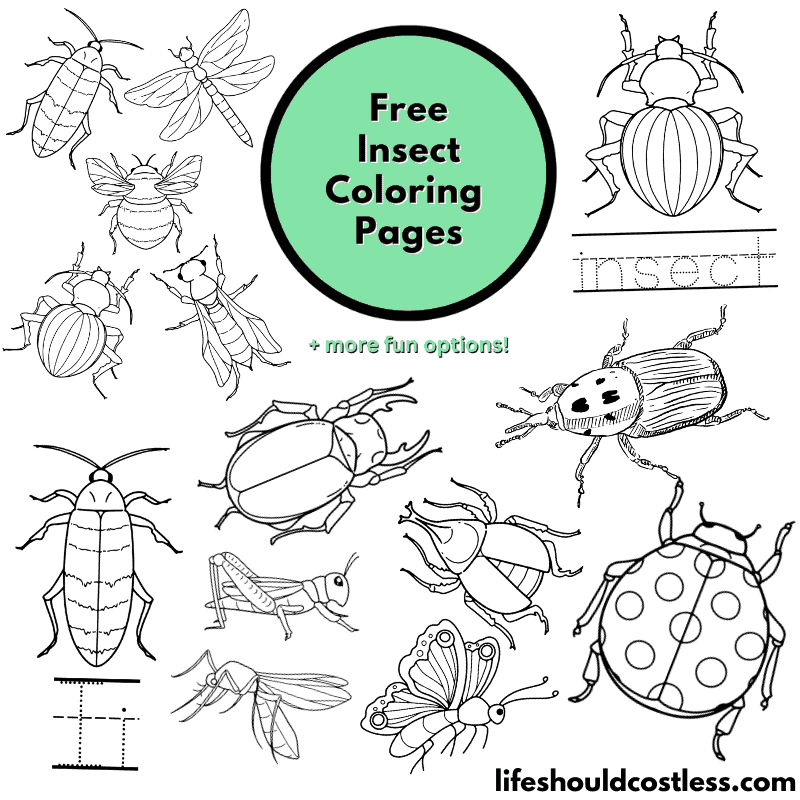
How To Follow & Support This Site
- If you would like to subscribe to my email list, go here.
- Make sure to follow along via social media, by going here.
- If you would like to learn how to really show your support to this site (at no cost to you), go here.
- If you would like to make a direct donation to the site, go here.
Check out my other free printables
- To see all of my free printables, go here.
- If you would like to see my index of free printable coloring pages, go here!
- To see all of my animal coloring pages, go here.
- To see all of my insect-related coloring pages, go here.
Otherwise, here are direct links to several of my other related posts that you’re also going to love:
Animals / Insects
Animals / Birds
Animals / Mammals
Other good resources for a printable insect
- https://www.first-school.ws/theme/animals/cp_insects.htm
- https://clipart-library.com/insect-colouring-sheets.html
- https://kidspressmagazine.com/kids-activities/coloring-pages/coloring-pages-adults/insect-coloring-page.html
*This post was originally shared to this blog on 08/29/2023, and has since been updated to improve user experience, add video instruction, as well as to make it as shareable as possible across the social medias.
**Please note that I do try my hardest to provide factual, but easy to understand, information about each topic. If you notice a discrepancy in my coloring pages, facts, or see something that you deem “misinformation/incorrect” please make sure to notify me about it. I would prefer that you send me an email with a link to a more reputable resource on that subject, so that I can correct it as soon as possible. Thanks so much for helping this site become the best that it can be!
***Resources from djinkers were used in the production of this article.
